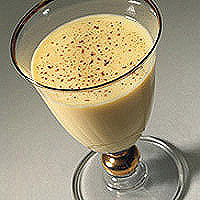health guides
Eggnog

Preparation, Uses, & Tips
Traditionally, eggnog was made a month before Christmas and allowed to age. However, given the salmonella risk associated with consuming raw eggs, the preparation of eggnog has been updated.
Eggnog should be served cold—it should not sit at room temperature.
Replace raw eggs with either a pasteurised egg substitute or with eggs that have been pre-pasteurised. You can pasteurize eggs at home by heating them until they stick to the surface of a spoon (slowly heat the eggs to 160°F, or 71°C). In some eggnog recipes, the entire batch is cooked to destroy bacteria.
In preparing eggless nog, French vanilla pudding makes a good egg substitute. If you’d like to make dairy-free eggnog, replace the milk with fresh or tinned coconut milk.
Copyright © 2024 TraceGains, Inc. All rights reserved.
Learn more about TraceGains, the company.
The information presented in the Food Guide is for informational purposes only and was created by a team of US–registered dietitians and food experts. Consult your doctor, practitioner, and/or pharmacist for any health problem and before using any supplements, making dietary changes, or before making any changes in prescribed medications. Information expires December 2024.


 We are proud to announce that
We are proud to announce that  As the market evolves, customers increasingly request a wider variety of omega-3 options for their lipid...
As the market evolves, customers increasingly request a wider variety of omega-3 options for their lipid...  Maintaining healthy glucose levels is crucial for preventing metabolic conditions like diabetes,...
Maintaining healthy glucose levels is crucial for preventing metabolic conditions like diabetes,...  Looking at formulating a new vitamin blend? Discover
Looking at formulating a new vitamin blend? Discover 







































